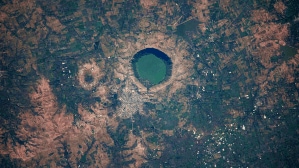Things Came to a Pass
How the Khyber Pass became globalisation’s passageway

The Khyber Pass: A History of Empire and Invasion
paddy docherty
Faber, 12.75 pounds
Roam the earth and see what was the end of those who came before you
— The Koran
A sword cut through the mountains” is how Rudyard Kipling described the Khyber Pass. Another Englishman claimed that its stones were awash with blood. Such is the fearsome reputation, even today, of the legendary 33-mile-long mountain pass between modern-day Afghanistan and Pakistan.
For centuries, the Khyber Pass was the only means of access to the vast plains of India. Time and again, invading armies poured through this gap, changing the course of Indian history. Paddy Docherty, a sometime chef, shipbroker, investment banker and oil consultant with a history degree from Oxford, traces the flow of events for over 2,000 years.
Docherty brings to his book a special knowledge of the Khyber Pass — he has traversed the length and breadth of the pass, reliving the events that took place at specific places — at one point, he relates standing at Ali Majid, where a century ago, Captain John Nicholson of the retreating British army found the mutilated body of his brother.
Docherty has marshaled all the available archaeological evidence and records, telling the tale with an enviable ease.
Because it is so associated with invasions back and forth, the story of the Khyber Pass is usually presented as a straightforward military history. Docherty does this — and more. The warriors are, for Docherty, only one part of the story. He also relates the impact they had on the people of India. He brings to life the soldiers and their exploits, and the way in which they destroyed or created in the areas they conquered.
The story of the Khyber Pass begins with the migration of the Aryans into India, and their settlements. Docherty begins with the ancient Persians who appear to have dominated most of Afghanistan and parts of India. The first recorded army that marched through the pass was that of the Macedonian king, Alexander.
The Greeks put down roots in Afghanistan and India. They left their mark through what we today call the Gandhara style of art. Docherty takes us through each successive invasion — by the Kushans,
Hunas, Genghis Khan, Timur, the Mughals — the Ghaznavid raids, battles between the British and the Sikhs and the attempts of the British to subdue the Afghans. Finally, the Khyber Pass also became witness to the death throes of the Soviet empire.
Docherty has an intriguing thesis — he describes the successive waves of invasions, their aftermath and the impact as a globalisation process. The armies brought knowledge with them, and became the conduit for new knowledge to be sent back home. They merged the civilisation of their home with that of their new home, and each cultural cross-fertilisation became a part of the next wave.
Today, the Khyber Pass is still a means of passage, but not the only one. The rise of aviation means that it has lost its strategic position, since warplanes and civilians can now safely fly over it to their targets and destinations. Technological advances mean that it is possible to fire a missile from a ship lying off the coast of Pakistan to destroy a terrorist camp in Afghanistan.
The Khyber Pass may not see armies marching through it in future, but it is still the playground of drug smugglers, arms merchants, spies of all hues, terrorists, and refugees. Clearly, the story of the Khyber Pass is not over.



- 01
- 02
- 03
- 04
- 05




























